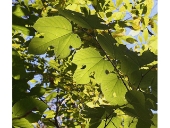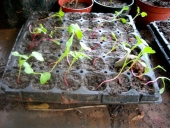There are obviously many things to consider when drilling a well. You should first consider why you want to drill a well. Is it for drinking water? Irrigation? Could you supply your drinking water needs with rainwater catchment? This will be MUCH cheaper and maybe even better quality than a well (or at least more predictable quality assuming you don't live near a coal power plant). You never really know what the water will be like once you poke a hole in the earth, it could be full of salts or some micronutrient contaminant like iron or lead, naturally occurring. Of course the water quality determines if its potable and if its good for irrigation. If you are irrigating then you will either need a good well or a pond, or both. Depending on what you are growing and how much area, irrigation can take A LOT of water (think acre feet = 326K gals). Most crops take about 1-2 acre feet of water/acre/year to produce with no summer rainfall.
If you decide that drilling a well is the way to go then continue reading.... First, as many have suggested, site your well (ie water) with either a geological survey or a dowser, or both. The depth of the water and the substrata will determine what method you use, the most common being a rotary drill with mud slurry or cable pull. If the water is any deeper than 300 ft or drilling through rock, you will most likely need to hire a well contractor to drill your well, as the rig would be far too expensive to purchase unless you wanted to go into the well drilling business. Definitely a good idea to check with a local well drilling contractor to just ask about the quality and depth of water in your area before gearing up to drill yer own well or paying for one.
(We recently commissioned the drilling of a 1000 ft deep well on a new farm project in Ventura Ca. It cost about $100K and will need 3 phase power to pump fossil water up to irrigate sub-tropical crops in a Mediterranean climate. Sounds kinda silly, but that is farming here in California. I don't know how I fell about it, as I think the way to go is dry farming, but we are retrofitting an existing avocado orchard so it kinda had to be done or else we would have to continue watering with chloramine domestic supply.)
But speaking of shallow wells, I have drilled a 60 foot deep well with LifeWater International (Faith based NGO) with a team of 4. You can download their manual for Shallow Well Drilling here: (
http://www.lulu.com/shop/lifewater-international/shallow-well-drilling/ebook/product-17386472.html). We used the Lonestar LS200 5.5 hp rotary drill rig with a Honda power plant from drilling into hard clay in Southern California. It worked like a charm. (
http://www.lonestardrills.com/water-well-drills/mechanical-series/ls200/)
If you think you could have a shallow aquifer it may be a good investment, especially if you share it with a few folks. I think they are around $15K new. Why not have multiple wells to ensure one doesn't run dry? Once you have the rig they are pretty inexpensive to set up (of course depending on how deep, ie how big of a pump you need). Shallow wells are the way to go if you can get to the water and your demand isn't much more than 5 gpm/7000 gpd. This water can be recharged much faster than water from 500 plus ft deep. Or, what about a shallow well drilling WORKSHOP!?!
Power supply for the well pump is another very big consideration in drilling your well. Most well pumps can run on solar unless you are down 800 ft plus, then you may need 2-3 phase (or phase conversion), and a 5-15 hp plus pump. Check Sunpumps for solar well pumps, or Grundfos. If you are lucky and your water table is higher than 24 ft (or you hit an artesian aquifer) you can have a hand pump or windmill with a suction pump. You cannot "pull" water up from more than 24 ft deep as the weight of the water breaks the water column. My stepfather has drilled about 5 wells in Ojai Ca with a super old and funky version of the Lonestar rig, and has made windmills out of scrap to passively pump/suck the water (at 14 ft deep) to all parts of the property.
By the way, the job of the drilling mud is to be so viscous that it removes the tailings from the bore hole, pushing them up as the mud is forced out of the bore by the pump. This means that you need a heavy duty mud pump (10 HP plus), one that has an impeller and not a diaphram that can pump a thick mud made from bentonite clay. The mud is pumped into a mud pit where the tailings fall out before being re-injected into the bore hole by the pump. One mud pit that has enough volume to accompany the amount of mud you will need to fill your bore hole is all you need.
Its all in the Lifewater manual if you want to get into it (I am not religious BTW). I love the concept of drilling your own well actually. Its really not that difficult (depending on your situation of course...)








